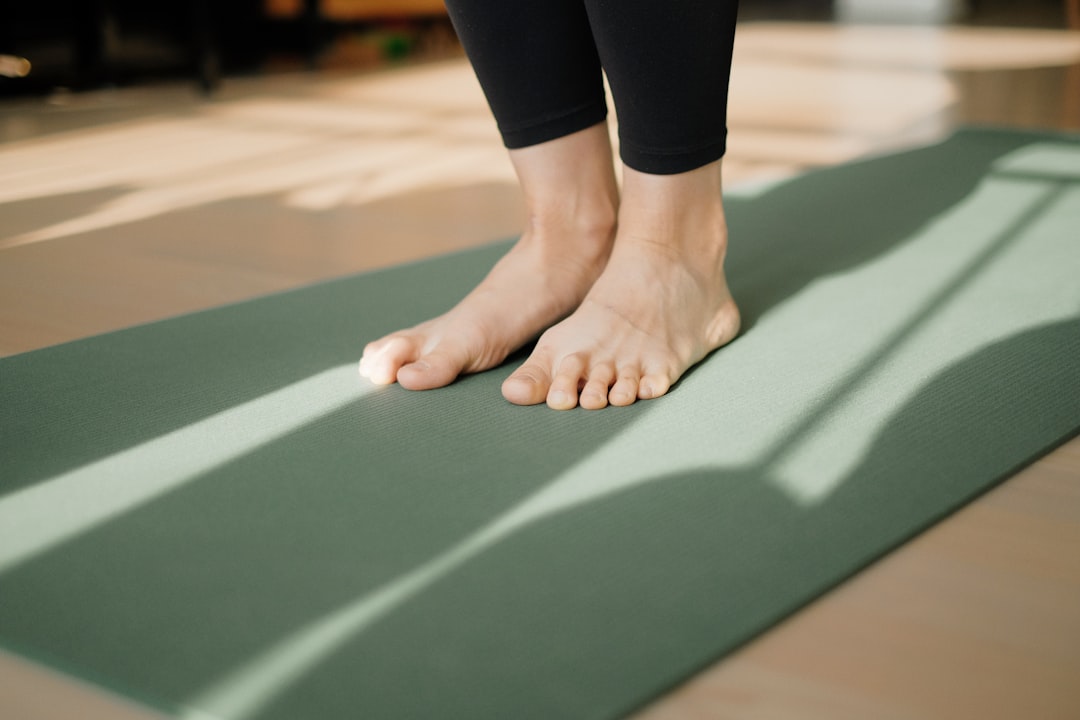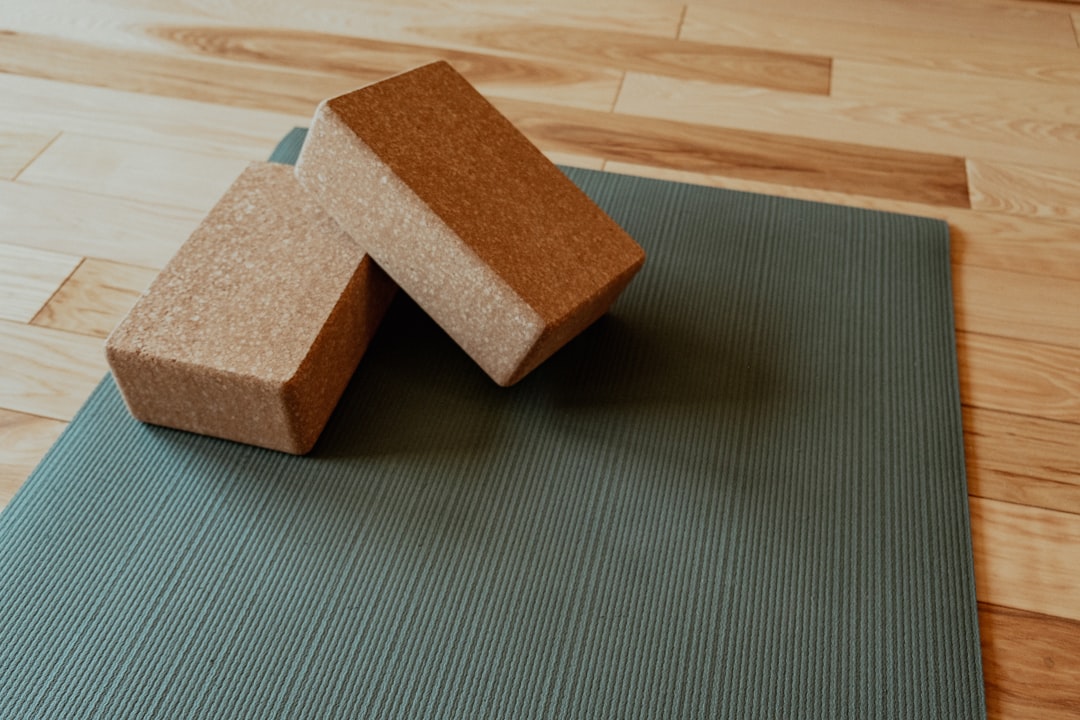

Engage prospects with a scan and streamline customer engagement with FREE QR code marketing tools by Sona – no strings attached!
Create a Free QR CodeFree consultation

No commitment

Engage prospects with a scan and streamline customer engagement with FREE QR code marketing tools by Sona – no strings attached!
Create a Free QR CodeFree consultation

No commitment
Digital transformation is driving significant change in carpet stretching services, where the need to seamlessly connect physical and digital touchpoints is more pressing than ever. A persistent challenge many providers face is missing high-value prospects who engage with printed marketing pieces, invoices, or in-home reminders but never make it onto a digital list or CRM. The risk is that valuable opportunities are lost simply because intent does not translate into action, or details slip through the cracks unseen.
QR codes unlock a practical bridge for this gap by providing direct, trackable pathways from these physical moments to tailored digital experiences. Customers can transition effortlessly from offline interest to actions like quote requests, instant consultations, or receiving maintenance guides. Their accessibility, cost-effectiveness, and power to capture granular intent data give carpet stretching businesses a new level of control over lead quality and marketing impact, shifting the buyer journey from missed connection to measurable conversion.
When QR codes are woven into service promotions, educational content, or follow-up touchpoints, providers not only stand out visually, but also gain the ability to nurture leads with timely, relevant engagement and convert offline curiosity into actionable pipeline, all while minimizing manual data entry and maximizing CRM visibility. This is where platforms like Sona QR earn their keep, since they centralize code creation, tracking, and integrations that connect the dots from the first scan to booked appointments and repeat work.

Carpet stretching contractors frequently encounter the frustration of anonymous, untracked interest, where local homeowners pick up a flyer or receive an invoice but never schedule or request a quote. QR codes offer a mechanism to break this stalemate by turning every printed touchpoint into a frictionless, measurable path to digital action. Replacing analog processes like paper forms, static brochures, and phone-only requests with scannable experiences reduces drop-off and increases the speed from curiosity to conversion.
To put this into practice, think of your most common handoffs and paperwork. A printed estimate can include a QR code that opens an instant scheduler with preferred time windows already applied. A leave-behind card can launch a two-step quote form that pre-fills basic fields. A job site sign can drive neighbors to a cost calculator that sends results to your CRM. These swaps outperform manual steps because scanning is fast, the destination is purpose-built, and the data flows directly into your systems.
A practical example: converting the static contact box on a service estimate handout into a QR code that launches a two-minute appointment scheduler. Homeowners scan while you are still in the home, pick a slot, and receive a confirmation email. You get a calendar hold and a CRM record that includes the source code from the printed estimate. The result is fewer missed inquiries, faster follow-ups, and a decrease in lost opportunities where high-value leads previously slipped through untracked.

Offline-to-online gaps often mean potential leads go unrecognized and unpursued, as anonymous prospects browse or inquire but never take the next manual step. Customers do not want to key in long URLs or hold on a phone queue. QR codes tackle this barrier by providing an instant, low-friction way for customers to act, no app required. In a mobile-first world, a simple scan that opens a tailored experience can be the difference between a booked job and a forgotten flyer.
Carpet stretching teams also need flexibility. Promotions and service bundles change with seasons or inventory, and printed materials can go stale fast. Dynamic codes solve this by letting you update the destination after printing. You save on reprints, keep messaging current, and maintain a consistent entry point for measurement. When every scan produces attributed data that flows into your CRM, you gain visibility into the real drivers of pipeline and retention.
Industry leaders in carpet stretching are increasingly relying on QR code tracking not just for engagement but to identify previously invisible demand. Codes on job site signs or neighbor offers surface nearby households who are actively considering floor repair or renovation. What used to be a black hole of unmeasured curiosity becomes tangible pipeline that is tagged, nurtured, and converted. For inspiration beyond the industry, see cleaning-focused QR ideas.

Carpet stretching firms often miss out on upsell and cross-sell opportunities because print collateral cannot track deeper engagement or signal readiness to buy. By adopting the right mix of QR formats, you align each physical touchpoint with a high-impact digital outcome. The goal is to choose formats that minimize typing, simplify contact capture, and accelerate scheduling or review collection.
The most effective formats for this vertical concentrate on conversions, contact capture, and post-service workflows. Dynamic variants allow tweaks to destinations and content without reprinting, which is essential for seasonal promotions or updated warranties. Sona QR supports a breadth of formats and centralizes management, so your team can run multiple campaigns without chaos.
Dynamic formats support rapid updates and segmentation, ensuring each interaction becomes an opportunity for tailored engagement and data-driven retargeting. For example, the same QR on a truck wrap can route to a neighborhood-specific page during local promotions, then switch back to your general scheduler after the campaign ends.
Every point of real-world interaction is a potential source of lost opportunity if engagement is not captured immediately or surfaced in your marketing stack. Carpet stretching providers often struggle with print materials that depend on manual steps, which get deferred or forgotten. By embedding QR codes at these points, you convert attention into measurable action and maintain momentum throughout the buyer journey.
Begin with assets you already distribute. Invoices, service receipts, and leave-behinds have high visibility and strong customer intent, making them perfect candidates for reviews, referrals, and warranties. Vehicles and job site signage reach neighbors who are primed by social proof. Direct mail gains attribution and becomes testable when tied to scannable offers.
By embedding QR codes strategically across these touchpoints, businesses create a proactive way to channel offline attention into digital engagement. You close attribution loops, create timely follow-ups, and ensure that no high-value prospect remains anonymous or slips through untracked.

Missed or incomplete lead data is a chronic source of frustration in the carpet stretching sector. Paper estimates do not sync with calendars, phone calls pile up after hours, and satisfied customers forget to leave reviews once the crew departs. QR codes address this by compressing key actions into a single scan that captures the right data, at the right moment, with minimal effort from the customer.
Focus on use cases that tie the physical moment to a logical next step. When someone is holding an invoice, ask for a review and offer a maintenance guide. When a neighbor notices your crew at work, make it easy to request an estimate. When a landlord needs recurring services, let them self-qualify through a quick questionnaire that routes to your commercial team.
Proactive use of QR codes across these scenarios means that even if a customer skips a phone call or puts off a form, their interest is still captured quickly. Your team starts with context, response times drop, and competitors have less space to intercept the opportunity.
Each QR code scan is a signal that captures intent, context, and behavior. For strategy on signal-based segmentation, see Sona’s intent data. Deploying multiple QR codes across touchpoints lets you segment your audience automatically and fuel precise retargeting and follow-up. In carpet stretching, this can be as simple as separating researchers who scan educational content from in-market buyers who scan pricing or scheduling pages.
Start by mapping scan points to your lifecycle stages. Top-of-funnel scans from yard signs indicate neighborhood curiosity and should trigger light education with social proof. Mid-funnel scans from estimate sheets signal comparison shopping, which calls for testimonials and package offers. Bottom-of-funnel scans from pricing pages or coupons are purchase intent, making them perfect for limited-time incentives and rapid sales follow-up.
Industry-specific distinctions help refine segmentation. For example, differentiate homeowners planning a remodel versus renters asking for landlord approval guidance, landlords or property managers seeking multi-unit service versus single-home owners, and new customers versus returning clients scanning maintenance lists. This allows you to deliver useful content and offers without guesswork.
Fragmented customer journeys often produce incomplete or outdated profiles that waste ad spend and slow sales. QR codes act as connectors across brochures, door hangers, invoices, vehicles, and events, creating real-time engagement and richer data collection. When every channel feeds the same analytics and CRM, you attribute performance accurately and improve outcomes across the board.
In carpet stretching, the strongest gains come from aligning the QR destination to the medium and the moment. A brochure at a home show should launch a brief cost estimator and scheduling option. A truck panel should trigger a tap-friendly landing page that explains common carpet ripple issues and includes a neighbor offer. A direct mail piece should carry a personalized URL behind a QR code that tracks route-level performance.
QR codes serve as the offline onramp to your digital marketing engine. With a centralized platform like Sona QR, you can manage codes for every channel, monitor performance in real time, and sync scan data with your CRM and ad platforms. The result is a connected funnel that moves prospects from awareness to booked appointments without leakage.
A disciplined process ensures your QR initiatives drive measurable pipeline rather than scattered engagement. Use the following steps to plan, launch, and optimize campaigns that fit the rhythm of your carpet stretching business, from first touch to follow-up.
The key is to anchor every code to a business outcome and to validate usability in the physical environments where it will live. Lighting, distance, and context matter. Pair each code with an incentive or benefit that is obvious at a glance.
Start with one or two high-impact workflows. Common goals include increasing appointment bookings from estimates, capturing reviews at job completion, or generating neighbor leads from job site signs. Align the code’s purpose with clear outcomes such as reducing time-to-schedule or raising review volume in a specific zip code.
Different formats fit different tasks. Static codes work for evergreen content like your gallery. Dynamic codes unlock analytics, retargeting, and post-print edits, which are essential for promotional flexibility and performance measurement.
Design is more than looks. It is about scannability, clarity, and motivation. Add a clear frame, a concise call to action, and color contrast that stands out against the background. Then test across devices and distances to ensure real-world performance. For placement and creative ideas, explore QR code advertising.
Roll out codes where they will meet the most motivated audiences. Match placements to typical behavior. Invoices target fresh satisfaction for reviews, trucks target neighbors, and direct mail targets households in priority routes.
Measurement turns scans into revenue. Use Sona QR to track scans by asset, time, and location. Evaluate conversion rates by destination and refine continuously. A/B test CTAs, landing page layouts, and offers to lift performance.
Platforms designed for these workflows, such as Sona QR, make it simple to map offline-to-online engagement, reduce manual data entry, and enable rapid learning cycles. As results roll in, standardize what works into templates for future campaigns.
Relying on bulk scan counts or generic analytics often leads teams to miss decisive engagement signals. In carpet stretching, you need more than vanity metrics. You need to see which assets and messages create booked appointments and repeat work, and which audience segments are most profitable. That calls for end-to-end attribution from first scan to scheduled job to invoice paid.
Modern tracking equips carpet stretching services with connected insights. The best practice is to tag codes by asset and context, capture conversions at the destination, and sync events into your CRM for a full-funnel view. With Sona QR and Sona.com, you get a closed-loop system that connects anonymous scans to known buyers, then ties activity to pipeline and revenue.
The result is clarity. You will know which code on which asset started the conversation, which follow-ups mattered, and how the opportunity progressed. This elevates QR from a convenience feature to a core part of your performance marketing and operations strategy.
Sustained results come from consistent deployment, clear value propositions, and automation that turns every scan into a next step. Focus first on the physical media you already use daily, then layer on segmentation and retargeting to increase customer lifetime value. The more you make QR a natural part of your service experience, the more data and outcomes you will capture.
Avoid overcomplicating design or destinations. Homeowners want immediate answers and an obvious payoff. Use short CTAs, pre-filled forms, and light-touch steps. When in doubt, choose the action that saves the homeowner time and the one that adds qualified data to your CRM.
Creative deployment examples help, too. Place a QR on job site door hangers with a neighbor discount that expires in 7 days. Add a QR on the inside of a closet door or on a furnace sticker that launches a maintenance checklist and a reminder to book restretching if ripples reappear.

QR code wins often come from simple changes applied consistently. These stories show how carpet stretching businesses convert ordinary surfaces into measurable pipelines and stronger customer relationships. Use them as a starting point, then adapt the core idea to your brand and market.
These examples share two traits. First, the codes are placed where attention is high and intent is clear. Second, the destinations are short, useful, and directly tied to the next step in the journey. When those conditions are met, scans translate to revenue.
Execution details determine whether your QR program drives booked work or just collects scans. Prioritize visibility, clarity, and context. Make sure your codes are scannable at the distance and lighting conditions of their placement, and give people a compelling reason to act right now.
Avoid three common mistakes. Do not bury codes in cluttered designs without a readable CTA. Do not route scans to generic homepages that force users to hunt for the next step. Do not rely on a single static code for all campaigns, which blocks analytics and personalization. Treat codes as campaign assets with clear goals, tailored destinations, and ongoing measurement.
Industry veterans agree that timing and relevance build trust. A well-timed, relevant digital handoff builds credibility, educates clients, and keeps quality, response time, and satisfaction at the industry forefront. Back that handoff with solid tracking, and you will see measurable gains in both new and repeat business.
QR codes empower carpet stretching services to turn overlooked analog moments into digital opportunities for engagement and revenue. By embedding QR codes throughout marketing assets and service workflows, businesses gain the ability to immediately recognize and act on buyer intent, surface high-fit prospects who would otherwise stay invisible, and nurture leads at precisely the right stages. The most successful teams treat QR codes as strategic infrastructure, not decorative add-ons.
The value goes beyond convenience. When QR campaigns are executed thoughtfully and tracked holistically with platforms like Sona QR and Sona.com, providers build a continuous data loop for attribution, personalization, and strategic pipeline growth. Modern solutions transform formerly anonymous interactions into actionable insight, equipping carpet stretching professionals to raise service standards, exceed customer expectations, and drive sustainable performance. If you have not already, Start creating QR codes for free, place your first dynamic code on your next estimate and invoice, and watch how quickly those small scans add up to real revenue.
QR codes have transformed carpet stretching services from traditional, manual processes into dynamic, measurable growth opportunities. Whether it’s attracting new clients, providing seamless access to service details, or enabling instant booking and support, QR codes replace outdated methods with fast, mobile-friendly interactions that capture real-time engagement data—turning every customer touchpoint into a powerful conversion tool.
Imagine your customers effortlessly accessing instructional videos, service guarantees, or special offers with a simple scan, boosting trust and satisfaction while driving repeat business. With Sona QR, you can create dynamic, trackable QR codes in seconds, update campaigns instantly without reprinting, and directly link every scan to customer acquisition and revenue growth. No missed leads, no wasted marketing—just smarter, more effective service outreach.
Start for free with Sona QR today and turn every scan into a loyal customer and a growing carpet stretching business.
Signs that your carpet needs stretching include ripples, wrinkles, or bumps that appear due to looseness or wear.
Carpet stretching involves tightening the carpet to remove ripples and wrinkles, improving its appearance and lifespan.
QR codes bridge offline and online interactions by enabling customers to easily request quotes, schedule appointments, and access maintenance guides, turning physical touchpoints into measurable digital engagements.
Carpet stretching is cost-effective, extends carpet life, and avoids the higher expense and disruption of full carpet replacement.
Carpet stretching can often be scheduled and completed quickly, with instant appointment scheduling facilitated by digital tools like QR codes.
Look for providers who use digital engagement tools such as QR codes for easy scheduling and transparent service options, and who have positive reviews captured through digital feedback.
Follow maintenance guides provided by your service provider, register warranties, and address ripples early to prevent further issues.
Not all carpets need stretching, but it is necessary when the carpet develops ripples or loosens, typically due to wear or installation issues.
Preventive measures include following care guidelines, registering warranties, and scheduling timely maintenance as recommended by your carpet stretching service.
The article does not specify exact costs, but carpet stretching is generally a more affordable alternative to replacement and pricing can be obtained via digital quote requests.
Use Sona QR's trackable codes to improve customer acquisition and engagement today.
Create Your FREE Trackable QR Code in SecondsJoin results-focused teams combining Sona Platform automation with advanced Google Ads strategies to scale lead generation

Connect your existing CRM

Free Account Enrichment

No setup fees
No commitment required

Free consultation

Get a custom Google Ads roadmap for your business






Launch campaigns that generate qualified leads in 30 days or less.
